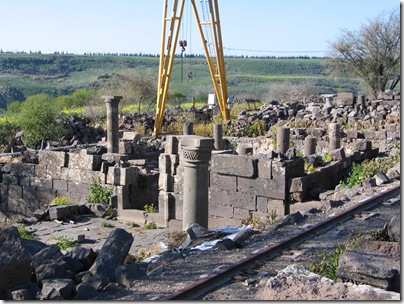A remarkable discovery of undisturbed archaeological material from the Temple Mount and dating to the Old Testament period was announced yesterday by the Israel Antiquities Authority. This is remarkable for a few reasons:
By all appearances, there was little apparent archaeological supervision of the Muslim digging of a trench on the Temple Mount last month. That’s why lots of people were screaming. It’s not that digging itself is bad, but digging without proper archaeological procedure is simply destruction.
Undisturbed layers from the First Temple period (1000-586 B.C.) are not often found anywhere in Jerusalem. This is because of later building activities and because of current inhabitation of the city.
No undisturbed layers from any period have been excavated on the Temple Mount, ever. This is owing to Muslim control of the site and their prohibitions against archaeological excavation. This dates back to the earliest “archaeologists” in Jerusalem, including Charles Warren in the 1860s.
It has been expected that the construction of the present Temple Mount by King Herod in the 1st
century B.C. was so extensive and destructive that little would remain (in stratified contexts) from the previous eras. The present discovery does not seem to constitute significant material in and of itself, but it certainly gives hope that more could be recovered should excavations be permitted. Similar discoveries from this time period have been made by Gabriel Barkay in his Temple Mount Sifting Project, but they were not from a stratified context as this was.
Enough of the significance of the discovery, here are some details:
Items discovered: ceramic table wares, animal bones, olive pits, bowls, juglet base, storage jar rim.
Date of items: 8th-6th century (roughly the times of Hezekiah to Josiah)
Location of discovery: southeastern corner of raised platform on Temple Mount
Archaeologist in charge: Yuval Baruch, Jerusalem District Archaeologist
Consulting archaeologists: Sy Gitin, Director of the W. F. Albright Institute of Archaeological
Research in Jerusalem, Israel Finkelstein of Tel Aviv University and Ronny Reich of Haifa University
The key statement making this an important discovery: “The layer is a closed, sealed archaeological layer that has been undisturbed since the 8th century B.C.”, Jon Seligman, Jerusalem regional archaeologist.
The skeptic: Eilat Mazar, “I think it is a smoke screen for the ruining of antiquities.”
The future: examination of the discoveries in a future seminar to be organized by the Israel Antiquities Authority
More information: Israel Ministry of Foreign Affairs (with photos), Israel National News (with wrong dates), Haaretz, Jerusalem Post, Maariv (more detailed article in Hebrew)
